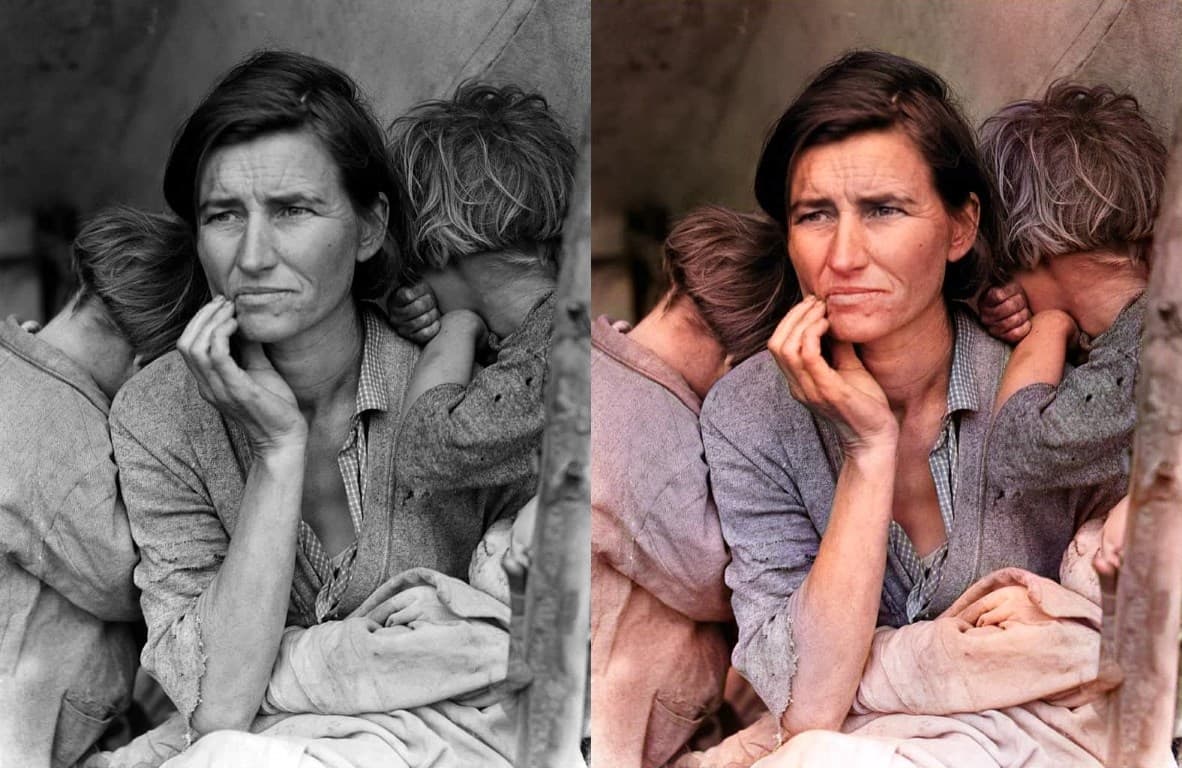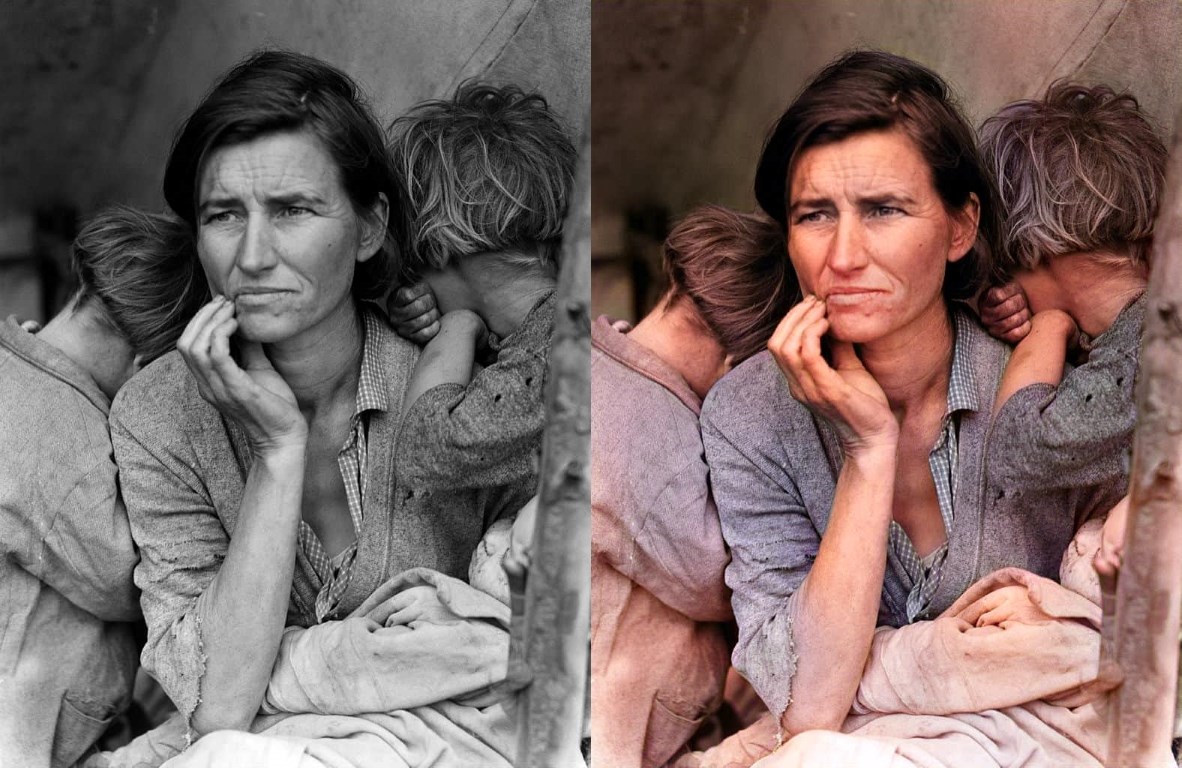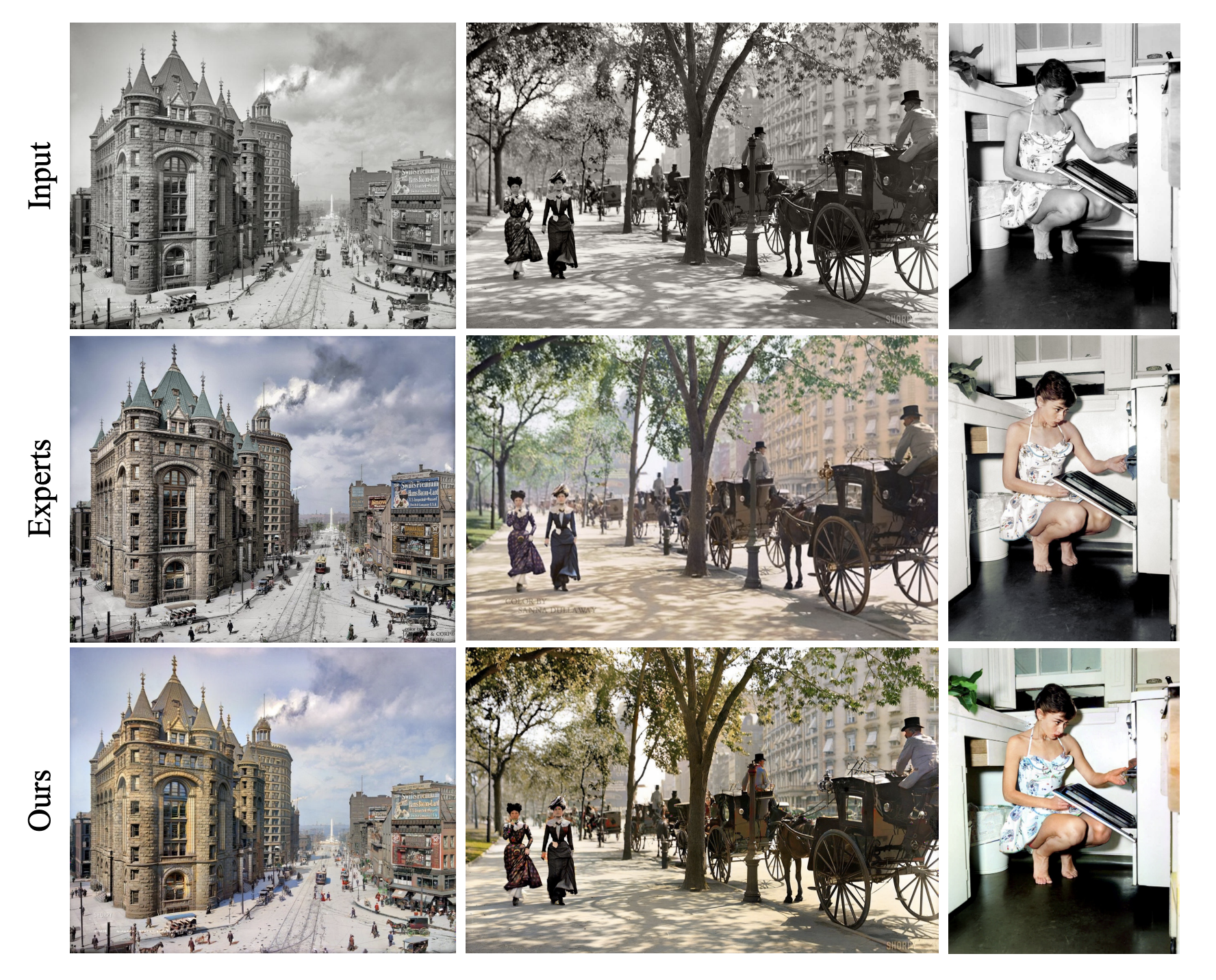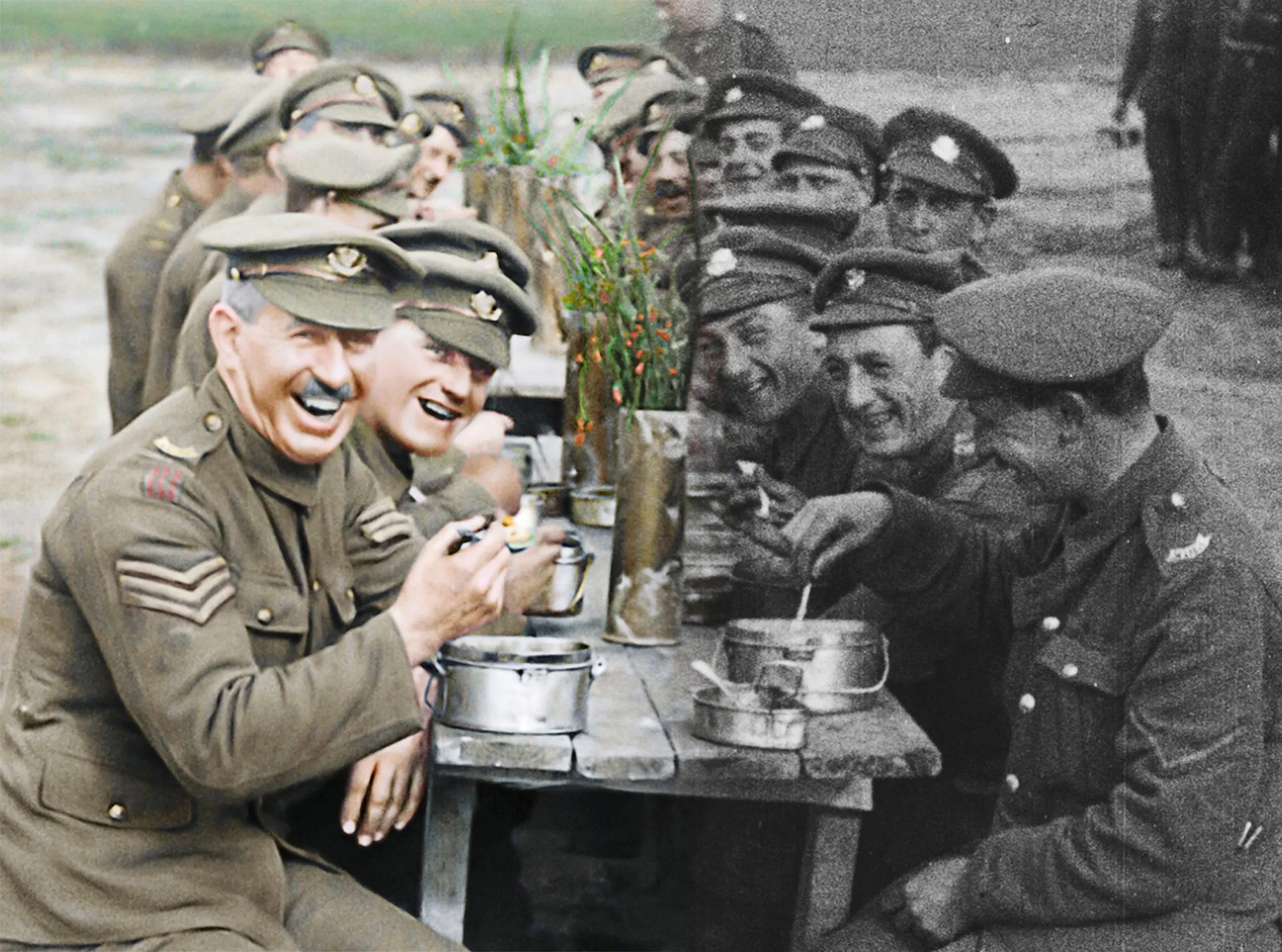From Black & White to Brilliant: How Accurate is AI Photo Colorization?

Breathing Life into the Past
Every black-and-white photograph holds a secret: a hidden spectrum of colors that could have been. If you've ever gazed into an old monochrome image, wondering how the colors might have appeared in reality, you're not alone. Today, advanced artificial intelligence (AI) technologies are revolutionizing how we experience historical images, transforming flat monochrome pictures into vibrant windows to the past.
As these tools grow popular—featured prominently on genealogy platforms like MyHeritage, specialized AI colorization tools like PictureColorizer, and acclaimed documentaries like "They Shall Not Grow Old"—many users wonder just how accurate and trustworthy these vividly restored images truly are.
The Magic Behind AI Colorization
At the core, AI photo colorization uses deep learning—advanced machine learning algorithms trained on millions of images—to guess the colors in a black-and-white photograph. These systems analyze image structures and textures to predict appropriate colors based on patterns learned from their training data.
Three main technologies power modern AI colorization:
-
Convolutional Neural Networks (CNNs): These analyze image structures and textures to predict appropriate colors based on patterns learned from millions of images (Zhang et al., 2016).
-
Generative Adversarial Networks (GANs): Tools such as DeOldify use a system where two neural networks compete: one generates colored images, and the other critiques the results, nudging them toward more realistic outcomes.
-
Diffusion Models: Cutting-edge techniques like those in DALL·E 2 employ diffusion models, refining results step-by-step toward unprecedented realism.

"Migrant Mother" colorized by DeOldify
It's worth noting that the quality and diversity of training datasets significantly impact accuracy and color choice. Skewed or limited data can lead to subtle inaccuracies or biases in the colorized images.
Measuring Accuracy: Perceptual vs. Historical
When evaluating AI colorization, we must distinguish between two different types of accuracy:
Perceptual Accuracy: Realism at First Sight
Perceptual accuracy refers to how realistic the colorized images look to humans. Modern AI achieves remarkably high perceptual accuracy, making colorized images visually believable—even indistinguishable from authentic color photographs at first glance.
Historical Accuracy: The Challenge of Truth
Historical accuracy requires actual knowledge of original scene colors. Without historical references or artifacts, AI can only guess based on learned patterns. Researchers often test this by converting known colored images into grayscale and then re-colorizing them, comparing the results with the original.

Richard Zhang's research highlights that AI typically handles common elements (skies, grass, skin tones) effectively, though it might occasionally miscolor less familiar objects. Similarly, historical items like uniforms, period-specific clothing, and cultural artifacts may be assigned inaccurate colors without manual verification from historical experts.
Professional historical colorizers, like those behind "They Shall Not Grow Old", go to extreme lengths to confirm accuracy, consulting military historians, period photographs, and preserved artifacts.
Comparing Popular AI Colorization Tools
Several platforms stand out in the current market, each with distinct advantages:
-
PictureColorizer: Known for its user-friendly interface and realistic color outputs, PictureColorizer combines powerful AI with ease-of-use, making it ideal for casual users and family historians. It offers a great balance between usability, realistic colors, and additional restoration tools.
-
DeOldify: Popular among hobbyists and historians, this open-source tool often delivers vibrant and detailed results through advanced GAN technology.
-
MyHeritage In Color: Built on DeOldify's core algorithms, this genealogy-focused platform has seen massive adoption thanks to its simplicity and emotional impact on family photos.
-
Hotpot.ai: Offers fast, convenient processing with solid general results, ideal for casual or hobbyist users.
Choosing the right tool depends on your project's purpose, required level of realism, and ease-of-use needs.
Real-World Applications: Where AI Colorization Makes an Impact
AI colorization isn't merely a technological novelty—it's changing how we connect with history across multiple domains:
Family Historians and Genealogy
Colorized images deepen emotional connections to ancestors, bringing personal history vividly to life. Many users report stronger emotional responses and greater interest from younger family members when viewing colorized family photographs (MyHeritage user testimonials).
Museums and Archives
Institutions like the Hiroshima Peace Memorial Museum with their Rebooting Memories exhibition utilize AI colorization to enhance visitor experiences, making historical events feel more immediate and impactful.
Media and Documentary Filmmaking
Peter Jackson's acclaimed WWI documentary They Shall Not Grow Old vividly illustrates the profound storytelling potential when historic footage is meticulously colorized, combining AI techniques with human expertise.

Ethical Considerations: Balancing Enhancement and Authenticity
While exciting, AI colorization raises important ethical questions:
Misrepresentation Risks
Colorization might inadvertently alter viewers' historical perceptions and understanding of the past. The British Library's research suggests that colorized images can significantly change how people interpret historical events.
Algorithmic Bias and Representation
Some algorithms inadvertently lighten skin tones or dull culturally vibrant clothing (Research by Bommasani et al., 2020). These concerns about color biases highlight the need for inclusive and diverse training datasets.
Transparency and Labeling
It is essential to clearly indicate when images are colorized to prevent misleading viewers regarding historical authenticity. Most historians and ethical practitioners recommend maintaining access to original monochrome images alongside colorized versions.
Tips for Maximizing Realism in Your Colorized Images
If you're looking to colorize your own photographs, here's how to get the best results:
-
Use high-quality scans: The clearer and sharper your original photo, the better your results. Higher resolution inputs generally yield superior colorization.
-
Repair before colorizing: Removing scratches, tears, and blemishes beforehand allows the AI to focus purely on colorization rather than being confused by damage.
-
Provide context or color hints: If you know specific colors in your photo (like uniform colors or brand colors), using platforms that allow user input can significantly enhance accuracy.
-
Post-processing adjustments: Slight tweaks in saturation or color balance after AI processing can enhance realism dramatically. Don't be afraid to use photo editing software to refine results.
-
Utilize historical research: For important historical images, supplement AI with research about period-appropriate colors, especially for clothing, architecture, and artifacts.
The Bright Future of AI Colorization
Looking ahead, AI colorization promises exciting advancements:
-
Enhanced contextual understanding: Future models will likely incorporate historical knowledge bases, ensuring contextually appropriate color choices based on time periods, locations, and cultural contexts.
-
Integration with AR/VR: Imagine visiting a museum and seeing black-and-white photos spring vividly to life through AR glasses, or stepping into immersive, historically accurate VR experiences based on colorized archival footage.
-
Greater interactivity: Next-generation tools will offer more intuitive ways for users to guide the colorization process, allowing for real-time adjustments and collaboration between AI and human expertise.
-
Ethical standardization: As the technology matures, expect more robust guidelines and standards for historically responsible colorization across archival and media platforms.
Conclusion: Seeing the Past in Vivid Color
AI colorization is not merely technology—it's a bridge to our past, enriching our understanding and emotional connection to history. While it must be used thoughtfully with awareness of its limitations, the technology offers immense potential for both historical education and personal exploration.
Whether you're reconnecting with ancestors, creating engaging historical exhibits, or simply satisfying curiosity about how the monochrome past might have looked in full color, AI photo colorization provides a powerful lens for viewing history in a new light.
Interested in experiencing AI photo colorization yourself? Explore the capabilities of tools like PictureColorizer today and watch history come alive in color.